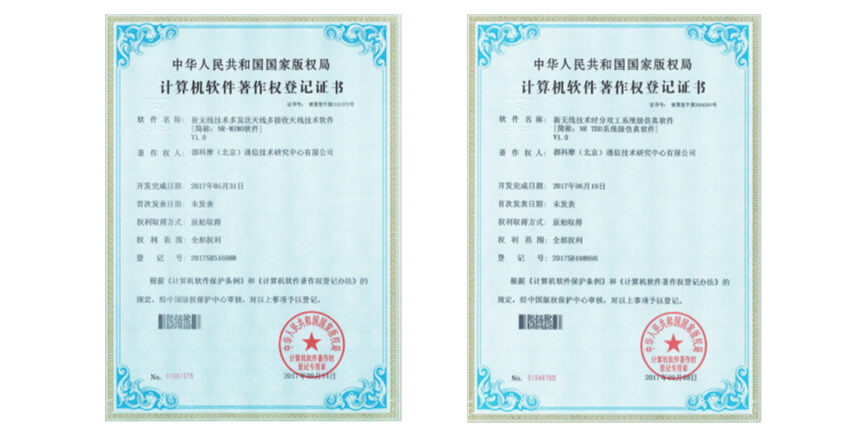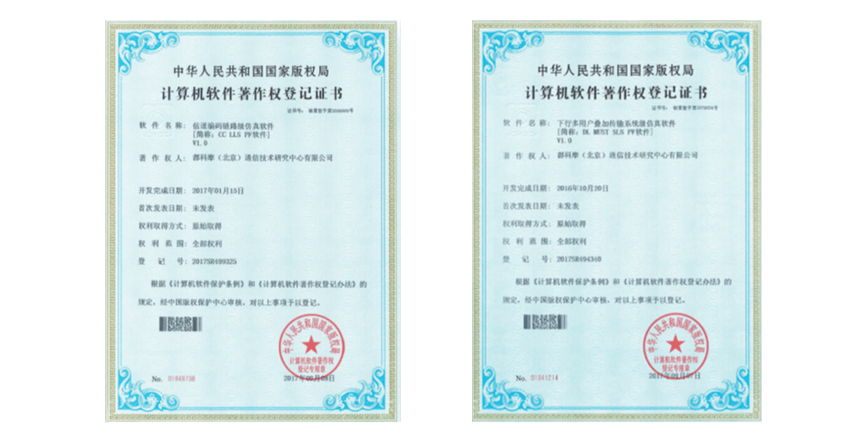Research Achievements
Wireless Technology Department
The Wireless Technology Department has been deeply involved in wireless technology research for many years. It has substantial technical experience, after having been through the 4G and 5G eras, and is currently commencing 6G preliminary research oriented for the 2030s. In the 2030s, new businesses such as holographic communications, space-ground integrated networks, tactile Internet, and fully autonomous driving will emerge, resulting in the deep integration of the cyber and physical worlds. They will continue to improve the experiences of individual and corporate users, solve social problems, and promote the sustainable development of society. Achieving these goals requires 6G to provide 10x more extreme performance than 5G.
The department is conducting 6G wireless key technology research, including new waveform and modulation, extreme massive multiple-input, multiple-output (MIMO), integrated sensing and communication (ISAC), and integrated terrestrial and non-terrestrial communication. The department has achieved fruitful research progress in the above-mentioned research fields by completing hundreds of international patent applications and publishing dozens of academic papers and won the IEICE Best Paper Award of 2023 and APCC 2024 Best Paper Award.
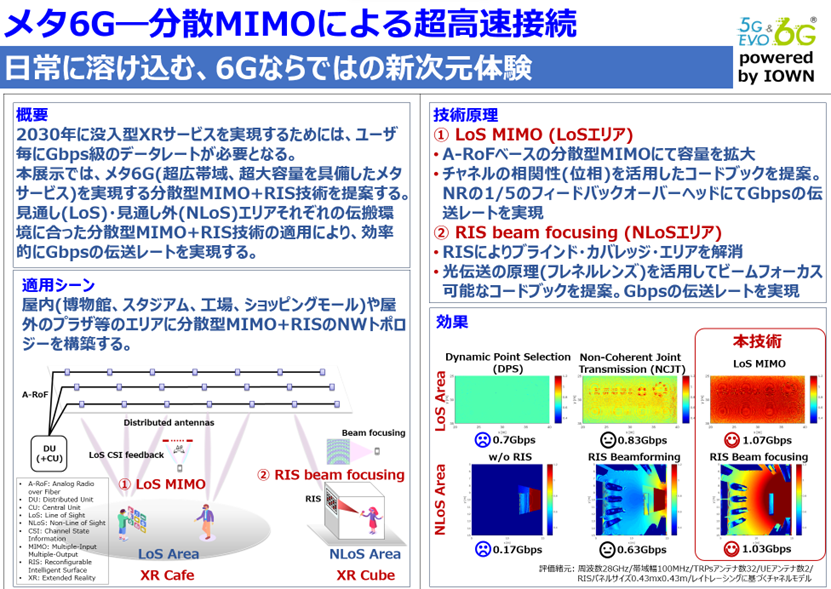
Exhibition in DOCOMO Open House 2024 |
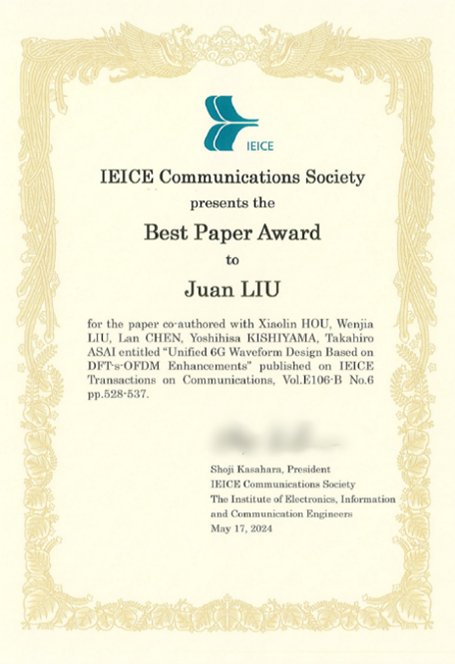
IEICE Best Paper Award |
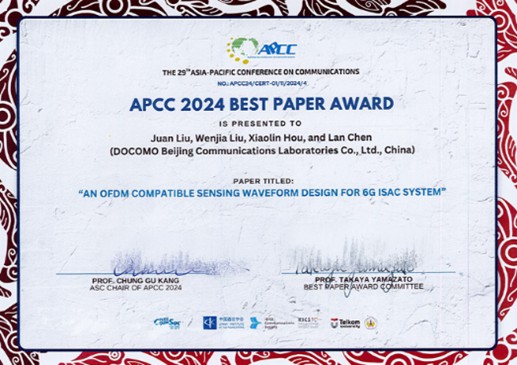
APCC 2024 Best Paper Award
Standardization Technology Department
The Standardization Technology Department has been deeply engaged in 3GPP standardization for many years, with rich technical accumulation and brilliant achievements from 4G LTE to 5G/5G-Advanced NR. DOCOMO Beijing Labs participated in and contributed to the standardization meeting for the first time in 2006. In 2007, our contributions were adopted by 3GPP, IEEE 802.1v and 802.16j standards for the first time. Since then, the standardization team of DOCOMO Beijing Labs has continued to grow with expanding research areas. From LTE to 5G/5G-Advanced NR, we are deeply involved in the standardization work of 3GPP RAN1.
In the research of LTE, our team provided large number of contributions during the standardization process of topics including LTE MIMO, ICIC, CoMP, carrier aggregation, dual connectivity, small cell deployment, IoT, unlicensed spectrum access, and so on. From Release 15 to Release 19, the Standardization Technology Department covers a wide range of topics during the research of 5G/5G-Advanced, and is deeply involved in standardization work of the topics including channel coding, initial access and mobility, scheduling and HARQ, mmWave, NR MIMO, URLLC/IIoT, IAB, NOMA, drone, Beyond 52.6GHz, full duplex and subband full duplex, UL coverage enhancement, NTN, mobility, XR, network controlled repeater, network energy saving, low-power wake-up signaling, ambient IoT, AL/ML, etc., and has been actively submitting contributions for the aforementioned topics as well as participating in online and offline technical discussions. We have made outstanding contributions to the successful completion of 5G/5G-Advance standardization.
According to statistics, DOCOMO Beijing Labs contributes to nearly 30% of the total amount of the 3GPP contributions submitted by DOCOMO during Release15~19. In recent years, DOCOMO Beijing Labs has applied for more than 250 standardization patents annually, and actively contributed to the matching and maintenance of standard-essential patents (SEPs). At present, the standardization team of DOCOMO Beijing Labs has begun to lay out 6G research in advance, and fully prepared for the upcoming 6G standardization.
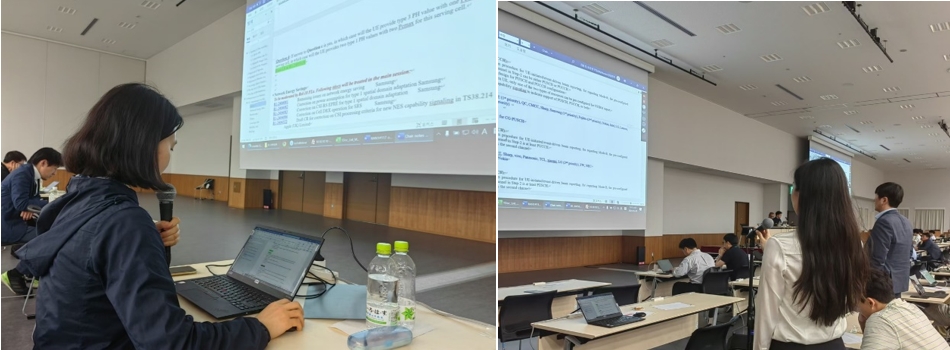
In Standardization Meeting
Solution Department
The Solution Department has accumulated extensive experience in the field of integrated wireless communication and artificial intelligence (AI) technologies. Currently, we are focusing on research and standardization of AI-integrated technologies for future communications, aiming to support operators in providing high-performance, highly reliable services at lower costs, meeting the dual demands of sustainable development and efficiency improvement. Achieving these goals relies on the significant enhancement of wireless transmission efficiency through AI technologies. To this end, the Solution Department has conducted the research of several key technologies and standardization work.
In terms of research, the Solution Department focuses on the following areas: intelligent air interface technologies, such as beam management, channel status information (CSI) feedback, channel estimation; and intelligent wireless control technologies, such as mobility management. Our research results have shown significant effects in improving data transmission rates, reducing air interface overhead, and lowering operator investment costs. Notably, intelligent mobility management has provided technical reference and procurement specification for network operations, earning the Good Job award from the headquarters.
In addition, the Solution Department has achieved remarkable success in international standardization, particularly in the AI for Air Interface in 5G Advanced. Our research and validation have provided important foundations for establishing the standards. The department has filed nearly a hundred patents and submitted dozens of contributions to 3GPP.
Looking ahead, the Solution Department will continue to delve into the integration of 6G and AI, exploring cutting-edge issues in next-generation wireless technologies. Through technological innovation and international collaboration, we aim to bring more efficient and sustainable solutions to global users.
AI Technology Department
Through technology R&D and the fruits of innovation, the AI Technology Department actively supports headquarters’ related business development. In the field of natural language processing, Chinese normalization technology and news summarization have received a high degree of recognition and kudos from headquarters. The digital expression work performed by the department was successfully applied to Mirai Company’s neural network translation engine. In the field of computer vision, crowd counting, video emotion recognition and engagement recognition systems developed by DOCOMO Beijing Labs strongly support the cooperation between headquarters and related Japanese companies. The facial recognition and facial attribute recognition system is integrated into the DOCOMO cloud service API. The artificial intelligence business system developed by the department has generated a number of software copyright applications.
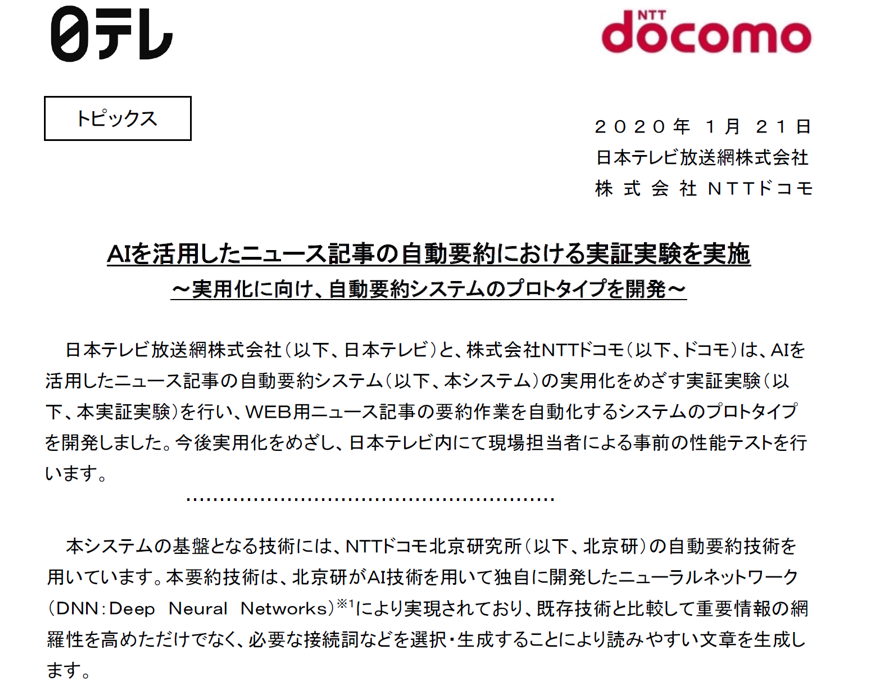
Press Release of News Summarization
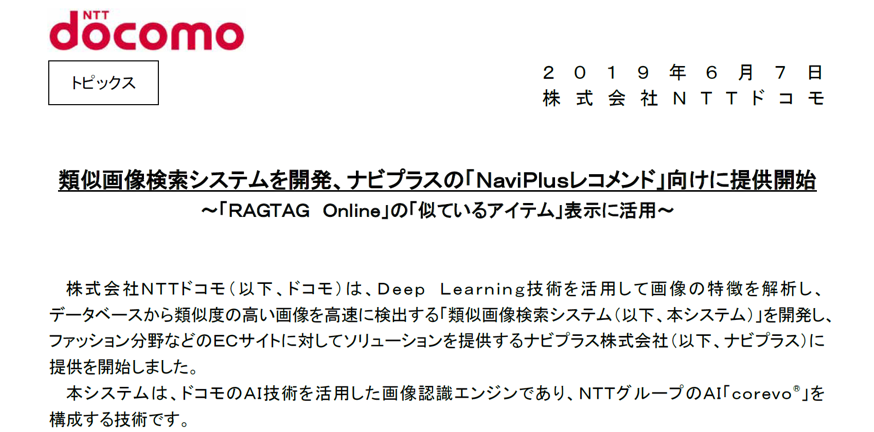
Press Release of Image Similarity Search
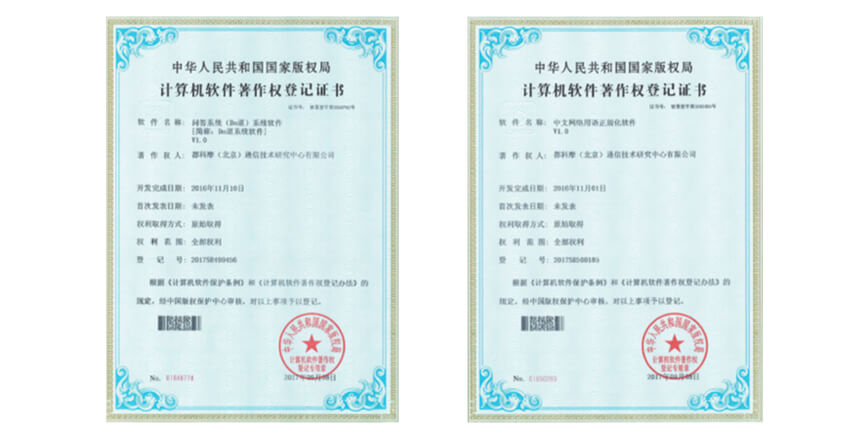
Artificial Intelligence System Software Copyright Certificate
Platform Development Department
With regards to simulation platform construction, the Platform Development Department has established a unified simulation pool consisting of more than one hundred high-performance emulation servers, an automated simulation task management and scheduling system, as well as a real-time simulation resource utilization monitoring system to ensure efficient simulation work. Up to 10 GPUs on a single emulation server cluster have been introduced to effectively support the development and evaluation of artificial intelligence services based on deep learning.
In wireless communication simulation, we have developed and updated simulation platforms from 3GPP LTE Release 8 to latest 3GPP NR releases to satisfy 3GPP evaluation requirements and commercialization evaluation demands. Until now we have applied for more than ten software copyrights and have transferred dozens of achievements to headquarters. Simulation outcomes have been output to hundreds of 3GPP proposals, adopted by tens of 3GPP TRs and supporting more than one hundred patent applications and academic paper submissions.
In terms of artificial intelligence, we create a unified platform for natural language processing and computer vision based on advanced frameworks, and achieves framework sharing and module sharing. The establishment of a GPU cluster simulation environment and code management mechanism enables powerful capabilities of rapid development and technical verification.
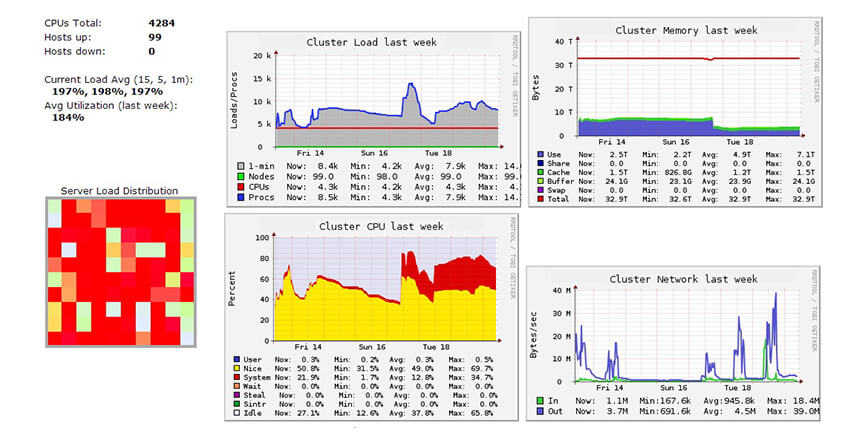
Simulation pool, simulation resource scheduling and monitoring system
